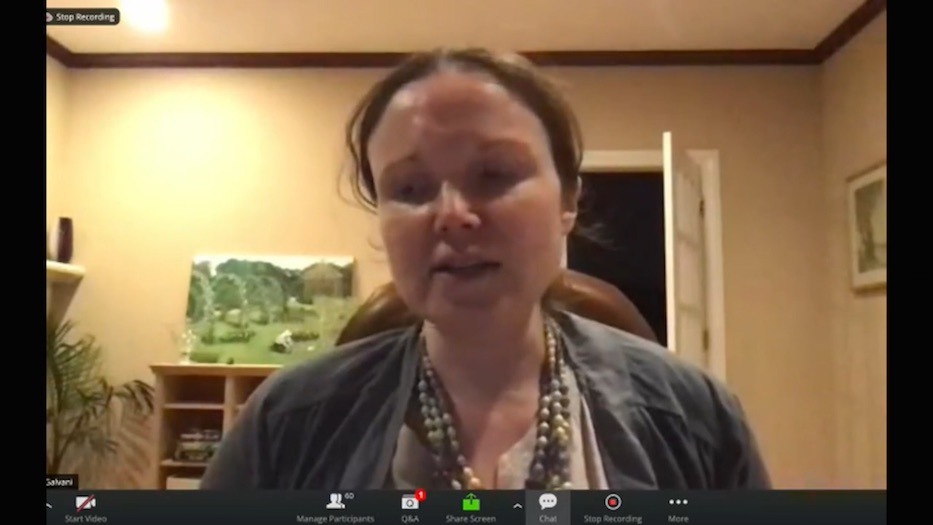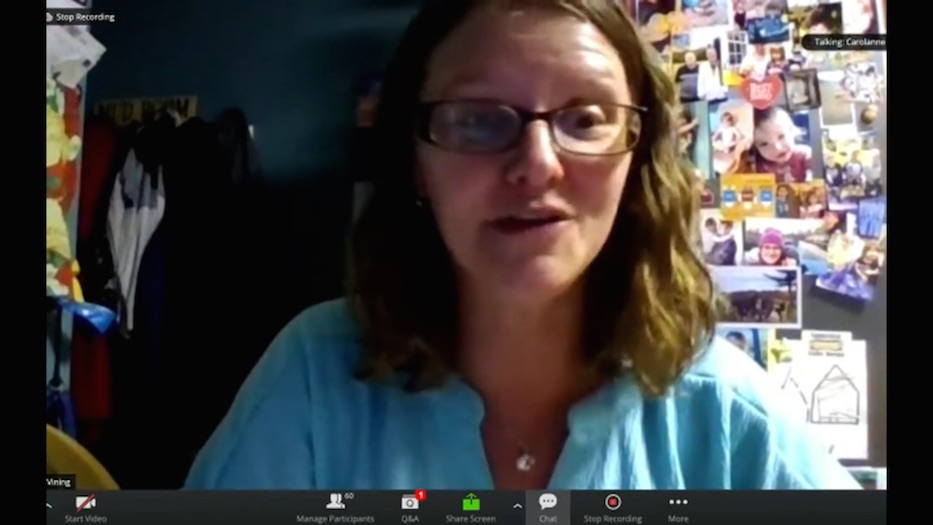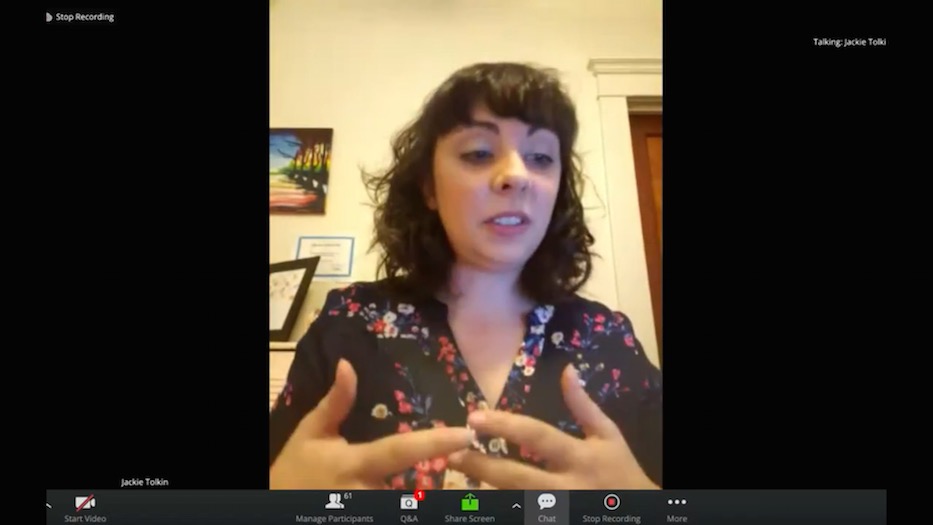
Culture & Community | Education & Youth | COVID-19

| Dr. Alison Galvani. Screenshot from Zoom. |
No place in the United States has the necessary testing resources and training to open back up. Including schools.
That’s according to Dr. Alison Galvani, a professor of epidemiology at the Yale School of Medicine. As schools across the state begin opening for in-person and hybrid teaching, she believes that the precautions taken will be insufficient.
“There is nothing magical about six feet,” she said in a virtual presentation Tuesday night. “The CDC (Centers for Disease Control and Prevention) wants to give people a guideline that is easy to follow. The probability that you will be exposed to the virus does decrease with increased distance but six feet is not a magical number.”
Tuesday, Galvani joined Connecticut teachers Jackie Tolkin and Carolanne Vining on Zoom to discuss the potential dangers of reopening schools. Eric Maroney, an English professor at Gateway Community College, moderated the panel. The event was organized by Connecticut Public School Advocates, Connecticut Badass Teacher Association, and Connecticut Workers Crisis Response.
As New Haven schools begin the school year fully remote for the first 10 weeks, many schools across the state have already returned to in-person teaching. Some districts like Hamden and Norwalk have delayed the start of school due to staff shortages, teachers who have tested positive for COVID-19, or health protocols that are not yet in place.

As the Director of the Center for Infectious Disease Modeling and Analysis at the Yale School of Public Health, Galvani believes that the silent transmission of COVID-19 will prove too difficult to trace, especially with limited testing resources.
COVID-19 is different from other respiratory diseases because it is most contagious early in its transmission when there are no symptoms. Galvani compared it to the flu, when visible signs of sickness mean peak contagion. The silent and early spread of COVID-19 transmission means that by the time a case is detected, the infected person has most likely already passed through their peak contagion phase without any notice.
Compared to adults, she explained, children are already more likely to transmit respiratory diseases like the flu. Compounded with the fact that children are more likely to be asymptomatic and exhibit less severe symptoms, the tracing of COVID-19 will require immense testing that is not currently available.
She recommended a “double ring” of contact tracing, in which every person who has come in contact with a suspected COVID-19 case be tested, then every single person who has come in contact with a tested person also get tested. This tracing measure is currently not required; she suggested it would prove difficult due to the high number of tests required.
The CDC has also issued inconsistent guidelines about testing in the recent months. Two weeks ago, the agency recommended that individuals who came into contact with a COVID-19 infected person and then exhibited symptoms should be tested, but did not necessarily need a test if they were asymptomatic. After public outcry from experts and members of the scientific community, the recommendation was reversed to include testing for all.
The most clear evidence for not reopening schools is the continued number of cases across the state, Galvani argued. Despite Connecticut's track record on COVID-19, areas like Danbury have seen a spike in cases in recent weeks. Yale University reported its first student case, an asymptomatic undergraduate, last week. In the last week, the university listed seven positive cases among students on its COVID-19 tracker.
“The incidents are still higher than when we first closed schools,” she said. “It is inconsistent to say we are going to open schools before we have even suppressed the incidents below where we closed the schools in March.”

Tolkin (pictured above) said she believes that Gov. Ned Lamont’s push to reopen schools will disproportionately impact less-funded school districts, particularly those with Black and Latinx student populations. She cited the flexible guidelines as an indicator that many schools across the state will not be able to take the necessary precautions.
“There are very few must-haves,” she said. “However, there are many, you can do this. The state knows that these districts are underfunded and will not be able to meet the extra guidelines.”
Vining, an elementary school art teacher in East Hampton, believes her school district has the necessary funds to reopen and has taken all the required precautions but it is still insufficient.
“We’re in the building now, and I am already seeing what is not safe,” she said.
Instead of returning to in-person teaching, Vining believes schools need to push back the reopen day and invest further in preparing teachers for remote learning. She taught herself how to make a YouTube channel for art demonstrations and relied heavily on feedback from parents and students on how to improve the channel.
“I know there are a lot more resources out there,” she said. “We need help finding those resources and working with them.”
Later in the panel, Tolkin responded to the argument that students need to return to in-person learning to reduce the developmental harm caused by social isolation.
“There is no way that the social isolation children get from being home compares to losing a family member, a teacher, or themselves being hospitalized,” she said. “These kids will deal with these ramifications for years to come.”
Dr. Galvani added that Connecticut residents should expect to see a spike of COVID-19 cases as the summer ends and fall begins. The virus has more viability in lower temperatures and humidity, meaning it has a longer life.

